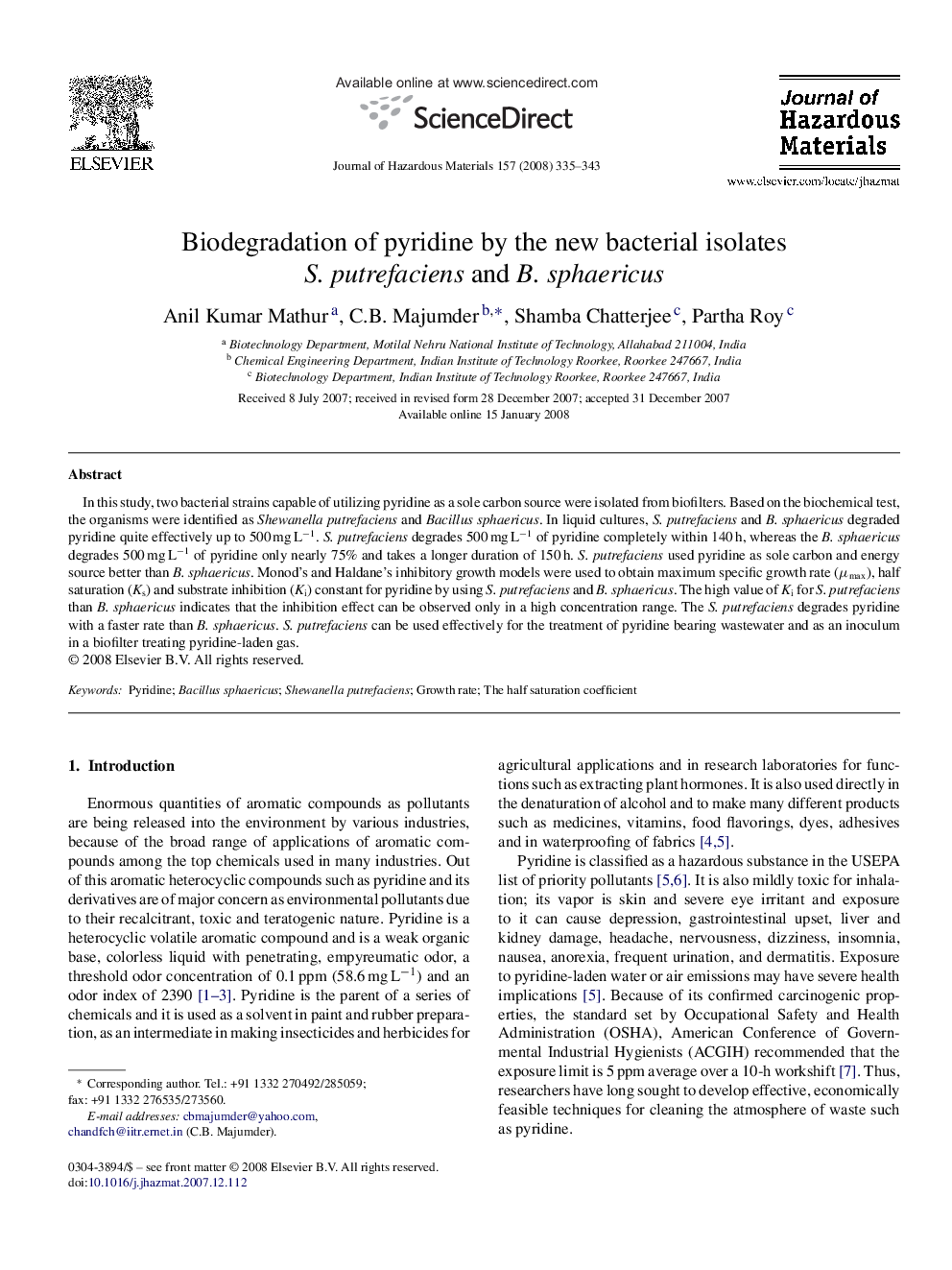| Article ID | Journal | Published Year | Pages | File Type |
|---|---|---|---|---|
| 582888 | Journal of Hazardous Materials | 2008 | 9 Pages |
Abstract
In this study, two bacterial strains capable of utilizing pyridine as a sole carbon source were isolated from biofilters. Based on the biochemical test, the organisms were identified as Shewanella putrefaciens and Bacillus sphaericus. In liquid cultures, S. putrefaciens and B. sphaericus degraded pyridine quite effectively up to 500 mg Lâ1. S. putrefaciens degrades 500 mg Lâ1 of pyridine completely within 140 h, whereas the B. sphaericus degrades 500 mg Lâ1 of pyridine only nearly 75% and takes a longer duration of 150 h. S. putrefaciens used pyridine as sole carbon and energy source better than B. sphaericus. Monod's and Haldane's inhibitory growth models were used to obtain maximum specific growth rate (μmax), half saturation (Ks) and substrate inhibition (Ki) constant for pyridine by using S. putrefaciens and B. sphaericus. The high value of Ki for S. putrefaciens than B. sphaericus indicates that the inhibition effect can be observed only in a high concentration range. The S. putrefaciens degrades pyridine with a faster rate than B. sphaericus. S. putrefaciens can be used effectively for the treatment of pyridine bearing wastewater and as an inoculum in a biofilter treating pyridine-laden gas.
Related Topics
Physical Sciences and Engineering
Chemical Engineering
Chemical Health and Safety
Authors
Anil Kumar Mathur, C.B. Majumder, Shamba Chatterjee, Partha Roy,
